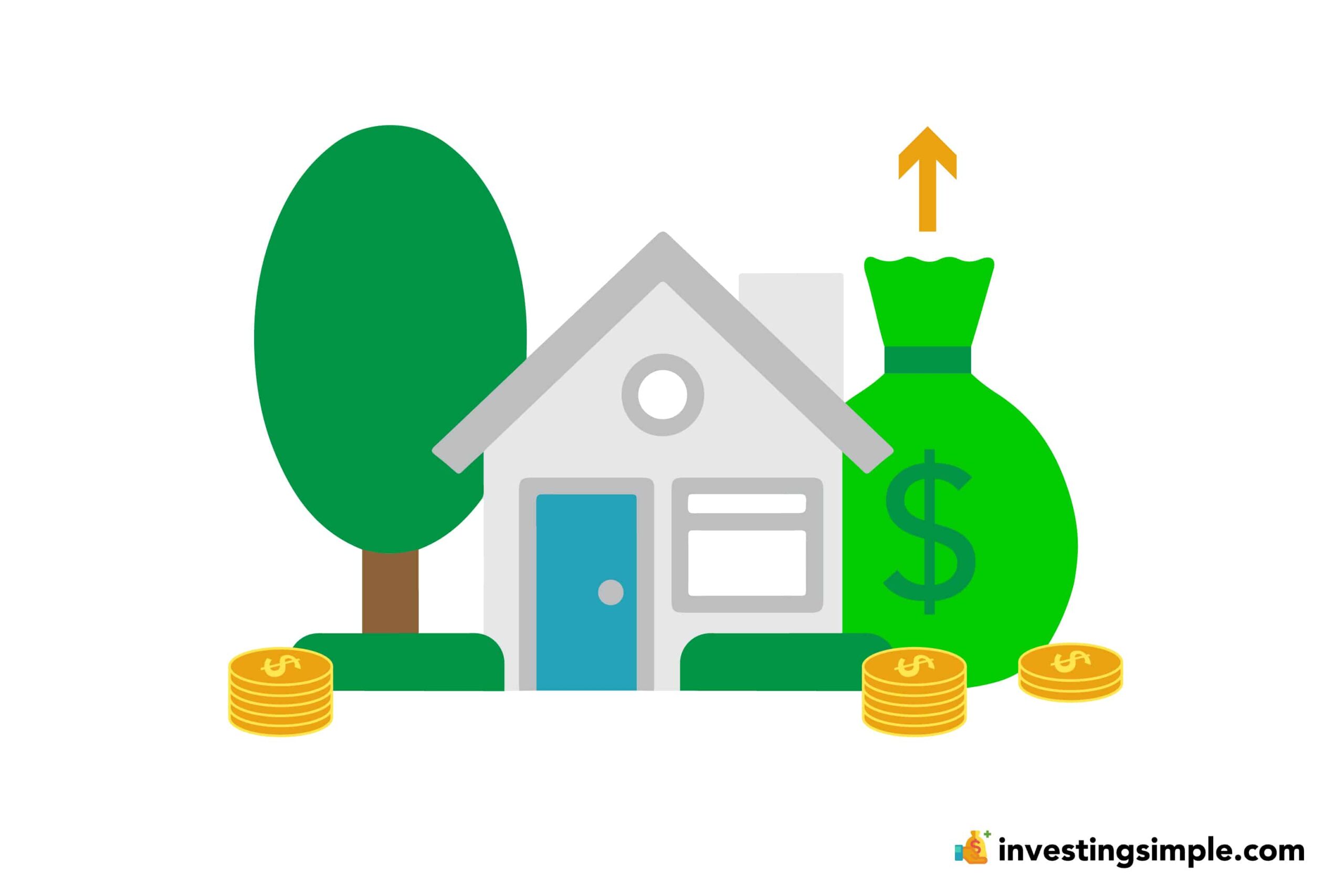





Investing Simple is affiliated with Fundrise, and we earn commissions for this endorsement of Fundrise.
Many people dream of early retirement and having the freedom to live life on their terms. One strategy that many use to retire early is to simply save and invest enough money to live off interest accumulated each year from investments and savings.
If you can do this, then you might be able to retire early. In fact, there are entire movements behind this idea such as FIRE or "financial independence, retire early."
Compound interest is what makes this strategy possible. In this article, we will break down the power of compound interest and go over some of the key information you will need to know if you would like to retire early and live off of interest.
Robinhood is a popular "all-in-one" investing app.
While they are most well-known for their commission free stock trading, they've recently shaken up the Retirement Investing World too.
Introducing Robinhood Retirement; home of the biggest IRA match on the market.
Here's what you need to know:
And don't worry, this comes with a Portfolio Builder Tool. You don't have to construct your investment portfolio from scratch if you don't want to.
Lastly, you'll even get a free stock worth up to $200 when you open a new Robinhood account using our link.
FIRE is an acronym that stands for Financial Independence Retire Early. The FIRE movement is a movement that has gained quite a bit of steam in recent years. The basic philosophy of the movement is to save as much as possible every single year and to accumulate assets that generate passive income.
The end goal is to have enough passive income so that you can retire well before you reach the traditional retirement age.
Many people are extremely passionate about the FIRE Movement and work hard to succeed in their efforts to retire early. This movement was inspired by the 1992 book Your Money or Your Life by Vicki Robin and Joe Dominguez.
Today, there are thousands of bloggers, podcasters, and YouTubers focused on the FIRE movement. There are even entire, multi-day events dedicated to pursuing FIRE.
The strategy teaches that you should save a large portion of your annual income each year. This can be a huge sacrifice in quality of life. But, those who can save enough money may be able to reach financial independence and retire early.
According to the ideas put forth in the book, people who want to live the FIRE lifestyle should practice saving up to 70% of their annual income every single year.
Once their savings reach roughly 30 times their annual expenses, they may be able to quit their day jobs and pay for their living expenses by taking 3-4% withdrawals from their total savings and investments.
Investors who want to achieve this should aim for an investment portfolio that can earn higher average returns than their withdrawal rate.
Considering that the S&P 500 yields an average of around 10% per year, people who use this strategy may still be able to grow their investment portfolios while taking out 3-4% each year to pay for their living expenses.
People who live the FIRE lifestyle are searching for total financial freedom and usually trying to escape the typical 9 to 5 job. The main incentive is to have more flexibility and to stop trading time for money. You would be hard-pressed to find anyone who doesn't like the sound of that!
The major hurdle here is, of course, living well beneath your means to save enough money to reach early retirement. This can be difficult for people who live on tight budgets or who simply don't budget at all.
However, any time you decrease your expenses and increase your savings, you are one step closer to financial freedom and early retirement.
As mentioned above, proponents of the FIRE Movement suggest that you need about 30 times your annual expenses to be able to live off your portfolio and the resulting compound interest.
So, the lower that your annual expenses are, the easier it will be to save 30 times your annual expenses, and vice versa. Depending on your lifestyle, you may easily be able to do this. Especially if you have a higher annual income.
According to this theory, if your annual living expenses are $25,000, you will need to have $750,000 saved to be financially free and to retire early. If your living expenses are $50,000, you will need to have $1.5 million saved.
To keep it simple, the FIRE movement suggests saving 50% to 70% of your annual income.
This figure, however, depends on how much you spend as a percentage of your annual income. If you want to retire early, the higher your annual income and the lower your annual expenses, the more money you will be able to save.
Say, for example, you are 25 years old and spend $35,000 per year but would like to retire by age 40. To do this, you must subsequently save approximately $1,050,000 in 15 years. Meaning you must save $38,671 per year and invest it into the stock market and earn on average an 8% return.
Unfortunately, this is much easier said than done.
To be absolutely sure that you will retire early, it is best to save as much as possible and assume a lower annual return. This way, you have a more conservative estimate of how much money you will need and just how long it will take you to accumulate it.
As with all things in investing, the risk of overestimating how much money you need is much lower than underestimating that amount.
If you overestimate and end up working an extra year you'll likely end up with more to spend each year in retirement and the ability to leave more to loved ones or causes you care about. If you underestimate and don't work long enough, you run the risk of running out of money in retirement.
Compound interest is interest that is paid to you because of the principal you have invested and the interest already accumulated from that interest. This is opposed to simple interest which is interest that is only paid on the original principal amount. Compounding can have a tremendous effect on your wealth, especially over a long period of time.
Thanks to compound interest, you can have your savings account grow every single year even if you stop adding money to it.
For example, if you deposit $100,000 into a savings account and your bank offers an interest rate of 2%, after one year, you would have $102,000. If you do not add any additional money to your account, thanks to compound interest, after two years, your account will be worth $104,040.
$40 of this growth is attributable to compound interest. Interest that is simply returned based on the interest you have already accumulated.
Banks and financial institutions offer interest as an incentive for customers to keep their money in the bank account. Banks then lend out this money to people and companies who are looking for loans.
Many of these banks compete to offer the best interest rates, encouraging more deposits to their institution. For example, online brokerage Betterment currently offers a savings account with an above-average interest rate.
Dividend stocks have a similar compounding effect to savings accounts. Dividend stocks pay dividends on a monthly or quarterly basis to shareholders.
If you own dividend stocks, you can watch the value of your investments grow over time as you receive more and more dividends. You can reinvest the dividends each time you receive them to keep growing your account.
In this way, you can benefit from the compounding effect of reinvested dividends. Certain investment platforms and brokerages will allow you to reinvest your dividends. By reinvesting your dividends, you ensure that the amount of idle cash in your account is minimal and compound interest is kicking in.
Capital appreciation within stocks can also have a compounding effect. Growth in the equity of companies can compound returns over time. As companies retain earnings and reinvest those earnings into the company itself, rather than pay out earnings to shareholders, they are attempting to generate even more return with that capital.
If you are trying to figure out how much money you can make with compound interest, there are several free tools available called compound interest calculators.
To use these calculators, enter in the relevant information such as current principal, contribution amount and frequency, years to grow, and the interest rate. With these tools, you can see exactly how much money you have if certain conditions are met. This can be extremely beneficial for planning your retirement, especially if you are trying to use the FIRE Movement strategy.
To save you the hassle of scrolling through Google search results, here is a compound interest calculator that you can use for free. You can test out different amounts for the interest, principal, etc. to see how much you would need to live off your savings and investments.
If you have never used a compound interest calculator before, the experience can be highly educational. Your two primary inputs are time and money and it can be eye-opening to see how saving for an extra year or two or chipping in an extra couple dollars each day can add up over time.
The FIRE Movement focuses on saving as much money as possible and benefiting either through compound interest from savings accounts or investment portfolios. However, that is not the only option when it comes to creating passive income. Despite what you may believe, there are many different ways to earn passive income.
Investing in real estate is one of the top ways to earn passive income. There are many different ways to invest in real estate and they don't all involve dealing with tenants.
If you are looking for a passive way to invest in real estate, you can invest in REITs (real estate investment trusts), which are securities that represent real estate and pay out dividends. You could also invest in crowdfunded real estate platforms such as Fundrise or Realty Mogul.
Other, more hands-on real estate investing include the following:
Know that with a hands-on approach, there tend to be maintenance and property management responsibilities. These can be outsourced but doing so will cut into your potential profits.
Investing in stocks can be risky, but investors can build long-term wealth by choosing smart investments. You can take advantage of compounding your returns by investing in stocks.
The S&P 500 which is an index of the 500 largest companies in the United States, has returned roughly 10% since its inception in 1957.
When investing in the stock market, you choose whether you want to pursue a passive or active investing strategy. Passive investors will typically try to track a market index like the S&P 500 by buying and holding index funds. Active investors on the other hand will take a more dynamic approach and attempt to outperform the market.
Stock market investing isn't for everyone, but if you are looking for a passive way to grow your wealth then it can't be overlooked.
We've put together a fully comprehensive article on investing in the stock market for beginners which is a good place to start if you have little-to-no experience in the stock market or just need a refresher.
The bond, or the agreement to lend money for interest, has been around for hundreds of years. Bonds are a type of debt that offers a fixed-income investment to the lender and a liability to the borrower.
In return for lending the borrower a principal amount, the lender typically repays a percentage of interest. There are many different types of bonds with various levels of risk. Investors can build a portfolio of bonds to generate passive income.
In reality, the deposits into your bank account are a form of a bond as the bank pays you interest to lend out your deposit in the form of loans. The bank makes money on the "spread" or the difference between the interest rate they pay you and the interest rate they receive on their loans.
Bonds come with different maturities, liquidity, and risk. Certain online investment platforms such as Betterment offer online savings accounts that invest in short-term bonds and money markets. The Betterment Cash Reserve savings currently offers one of the highest interest rates on the market.
Retiring early is all about replacing your active income through passive investments. If you are trying to retire early and live off of the interest, then it is vital to save as much money as you can each year. The FIRE retirement strategy suggests saving 70% of your pretax income.
Investing your savings in stocks, bonds, ETFs and other vehicles will help you build wealth and earn income over time. Other methods for generating a passive income will help you in your early retirement journey. Eventually, you will be able to replace your annual income each year and have more flexibility with your time.
When you stop having to trade your time for money, you have more freedom over what you do with your time and how you live your life.
What would you do with your time if you didn't need to work?
Don't forget to grab your free stock worth up to $200 from Robinhood today!